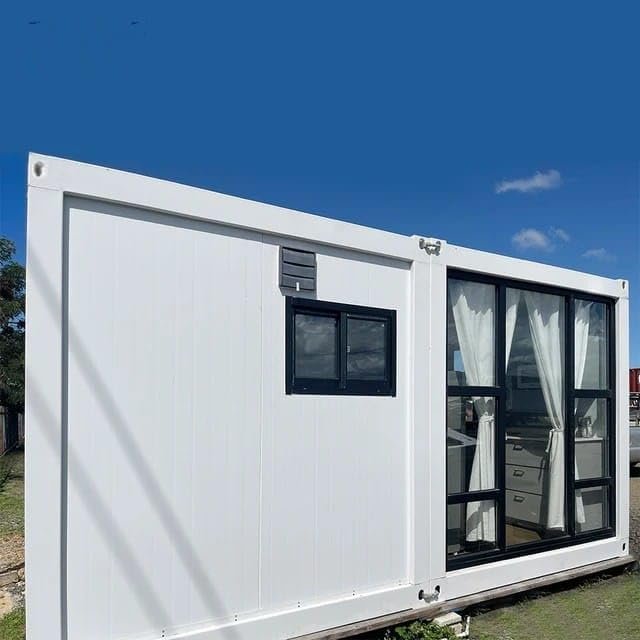
Rising costs of typical housing leave many people struggling to find affordable housing solutions. You may be asking yourself, “Is there a more cost-effective way to have a durable, eco-friendly home?”
The good news is that a new trend in housing using containers is reinventing the marketplace offering affordability, sustainability, and versatility. However, it’s important to look at the pros and cons to decide if this is right for you.
Let's explore whether building a storage container house is truly a good idea.
Yes, building a storage container house can be a great idea—if done thoughtfully and with proper planning. These houses offer numerous benefits such as lower construction costs, fast setup, and a modern aesthetic. However, challenges like insulation, zoning laws, and potential health concerns must be considered.
If you’re looking for a sustainable and unique home solution, container homes could be an excellent fit. Let’s dive deeper into the advantages and challenges.
What are the advantages of building a storage container house?
1. Affordability
One of the key reasons people opt for container homes is the lower cost. Shipping containers can be purchased for as little as $2,000 to $5,000 depending on size and condition. With additional costs for insulation and modifications, the overall expense is still far lower than traditional construction. On average, the total cost could be about 20-30% less than a standard home.
In countries like the Philippines, where construction costs are rising, container houses provide an affordable alternative for companies like Mike’s, who rent these homes out for temporary living spaces.
2. Durability and Strength
Shipping containers are made of corrosion-resistant steel, designed to endure rough ocean conditions, making them incredibly robust and resilient against harsh weather like storms, floods, or even earthquakes. This durability makes them particularly suitable for regions prone to natural disasters.
3. Eco-friendliness
A significant advantage of container homes is their environmental benefit. Repurposing used shipping containers reduces the need for new materials and lowers overall carbon emissions. By using containers that would otherwise sit unused, you’re contributing to a more sustainable housing model.
Additionally, energy efficiency can be enhanced by installing solar panels, rainwater harvesting systems, and high-grade insulation materials.
4. Customization and Mobility
Another major draw is the flexibility in design. Container homes offer modular construction possibilities. You can stack or arrange them in various configurations, creating multi-story structures or even off-grid, mobile homes.
This versatility is attractive for business owners like Mike, who want to quickly assemble and disassemble structures for new projects or leases.
What are the challenges of building a storage container house?
1. Zoning and Permits
Before starting construction, it’s critical to check local zoning regulations and permits. Not all areas allow container homes, and obtaining approval can be a complex process. Failing to navigate these legal hurdles could lead to delays or hefty fines.
2. Insulation and Temperature Control
Steel containers are not naturally suited for comfortable living without proper insulation. In hot climates, they absorb heat, and in cold climates, they lose it quickly. Adding insulation—such as foam or wool—will significantly improve temperature control but increases the project’s cost and complexity.
3. Potential Health Hazards
Containers used for international shipping may contain toxic chemicals or hazardous materials like lead-based paint or pesticide residues. Proper cleaning and retrofitting are essential to ensure the container is safe for habitation. Skipping this step could expose residents to health risks.
What are some of the most innovative container home designs today?

Container homes have evolved far beyond the basic box shape. Here are some exciting design trends:
- Expandable homes: These structures can unfold into larger living spaces, with designs that include two-bedroom configurations and even rooftop decks.
- Stackable buildings: You can create multi-story homes by stacking containers, which allows for urban-style living in a small footprint.
- Luxury interiors: High-end finishes, smart home systems, and eco-friendly amenities like solar panels and greywater systems are now common.
How do container homes compare in cost to traditional homes?
On average, building a container home can save you 20-30% compared to traditional homes. Basic container homes start as low as $10,000-$20,000, while fully furnished models with insulation, plumbing, and electricity can range from $40,000 to $100,000. In contrast, a new, traditionally built home typically starts at $150,000 or higher.
Are there any famous architects specializing in container homes?
Yes, renowned architects have embraced the container home trend. One example is Adam Kalkin, who created the Quik House, a prefabricated, steel-frame home built from containers. There are also several design firms that focus solely on container architecture, blending functionality with sustainability.
What are the environmental benefits of using shipping containers for housing?
Using shipping containers helps reduce waste by recycling and repurposing materials that would otherwise be discarded. Additionally, when outfitted with solar panels and energy-efficient windows, container homes significantly lower their carbon footprint. Modular construction also cuts down on waste during the building process.
How do container homes perform in extreme weather conditions?
Container homes are extremely resilient, especially when built with reinforced steel frames. They can withstand high winds, heavy rain, and even seismic activity. Properly insulated and anchored, these homes are capable of enduring a range of climate conditions.
Conclusion
In conclusion, building a storage container house can be a fantastic idea for those seeking affordable, durable, and eco-friendly housing. However, it’s important to consider the challenges, such as zoning laws and insulation requirements. With careful planning and proper execution, container homes offer a unique, sustainable solution for modern living.




